
Armchair travel around the world!
Start your reading adventures with our FREE Reading Atlas.

- Around the World in 14 Books
- 7 Thrilling Book Series
- 6 Audiobooks That Are Like Theater For Your Ears


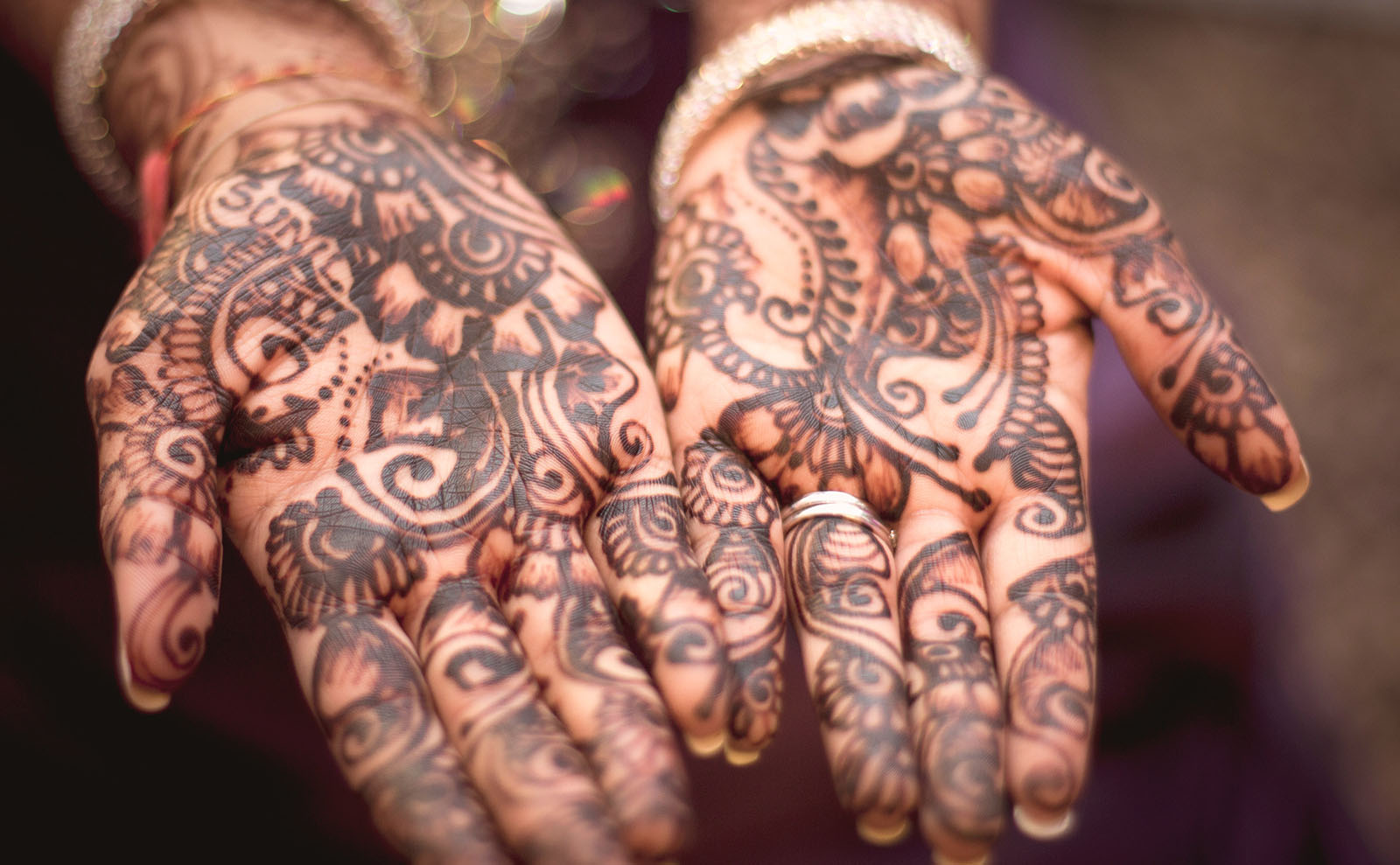
On our podcast episode Morocco: Couscous, Camels, and the Kasbah, we discussed the book A Street in Marrakech by Elizabeth Fernea Warnock. When I read that memoir for the first time almost 20 years ago, I was fascinated by the descriptions of a neighborhood wedding and the delicate, lacy henna tattoos that adorned the hands and feet of the women in the Marrakech medina. Here’s a primer on this ancient body art. — Melissa

Henna body art, also known as mehndi, begins with the henna plant, a small flowering shrub that grows around the Mediterranean region. The blossoms are used to create perfume, and the leaves are dried and crushed into a powder that’s used to dye clothing, hair, and — at least temporarily — the skin.
To make the henna ‘ink,’ the dried powder is mixed with liquids (water, lemon juice, strong tea) to form a thick paste, that’s then painted onto the skin by an artist. The designs come from the Berber tradition, and many Moroccans regard henna tattoos as good luck and a way to guard against misfortune. Some designs even incorporate the hamsa (palm-shaped amulet), an eye, or diamond shapes to ward off the evil eye.
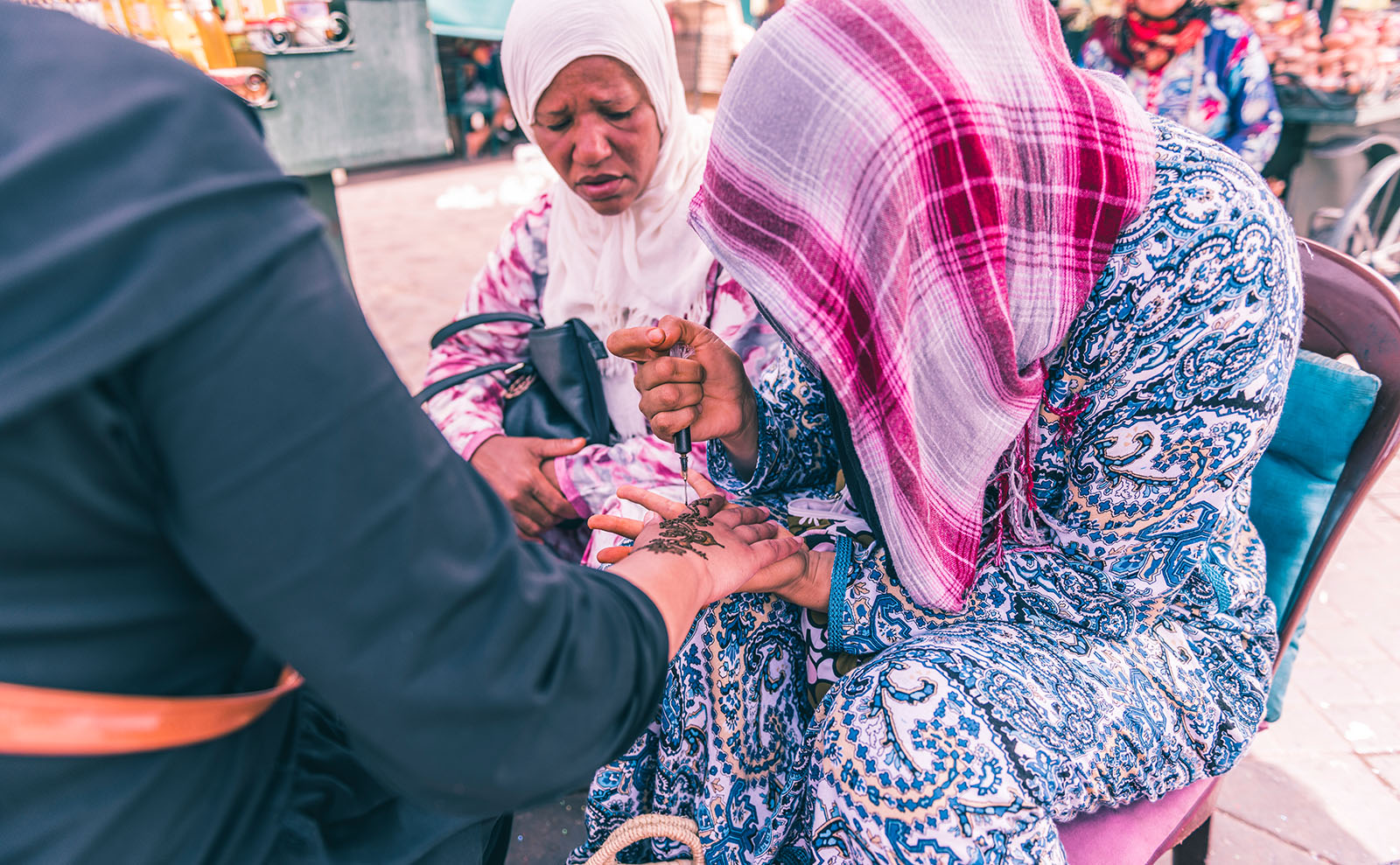
The paste is left on the skin to dry for a minimum of a few hours, but sometimes overnight or even up to 48 hours. The paste hardens and eventually cracks away, leaving behind a colorful design on the skin.
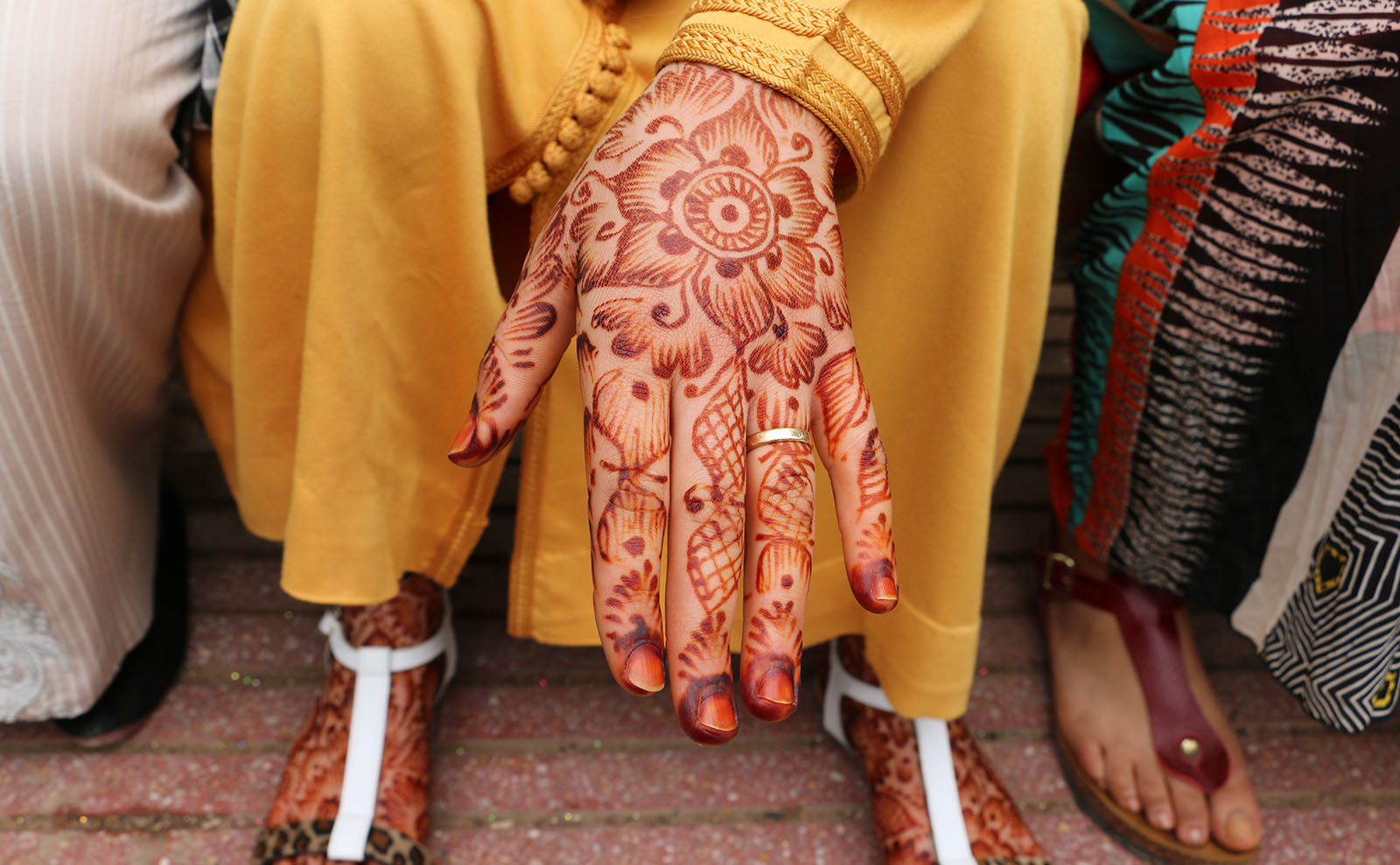
The stain can last for several weeks, and the color deepens as time passes (due to oxidation).
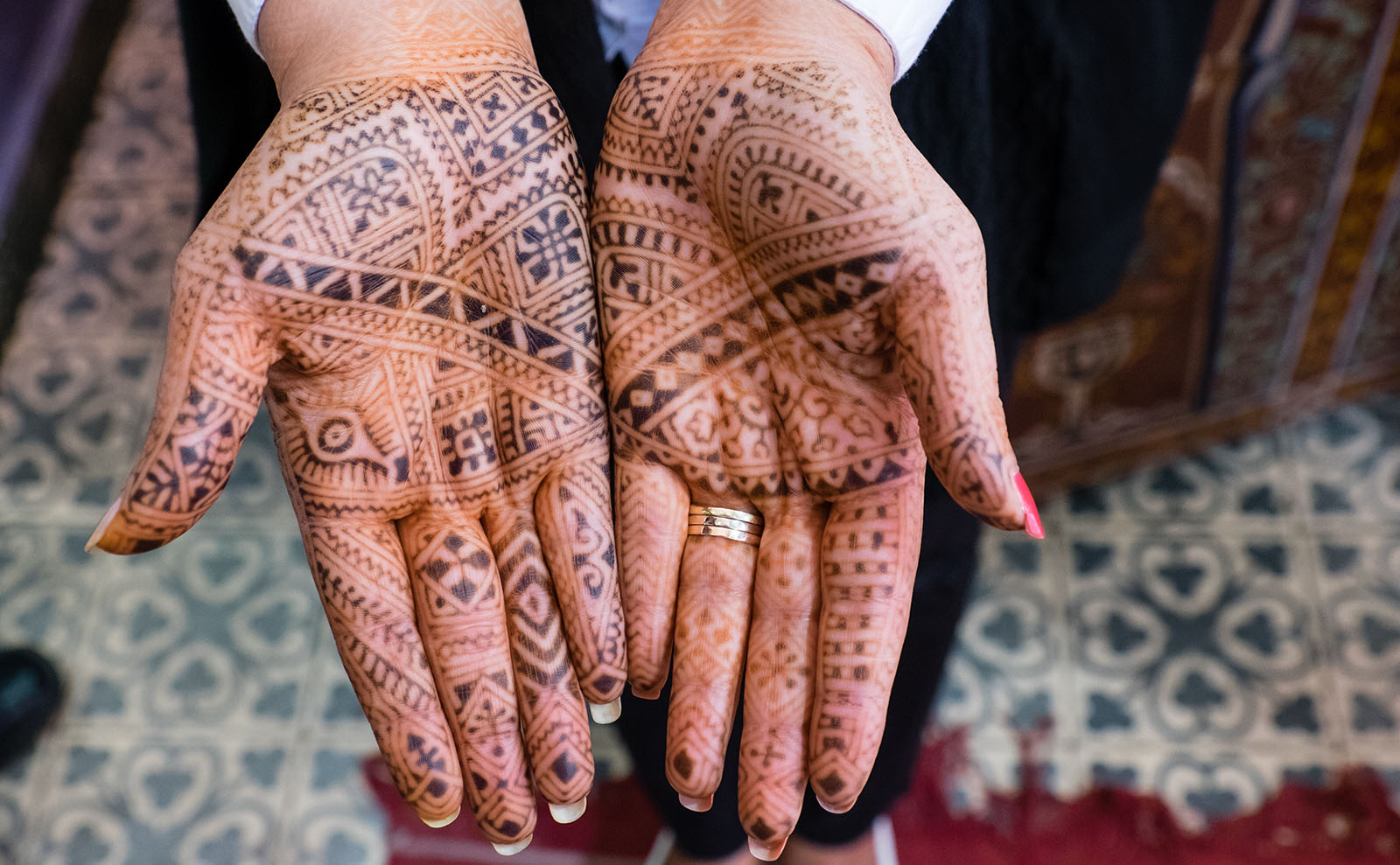
In Morocco, both the hands and feet are decorated with henna — on both men and women.
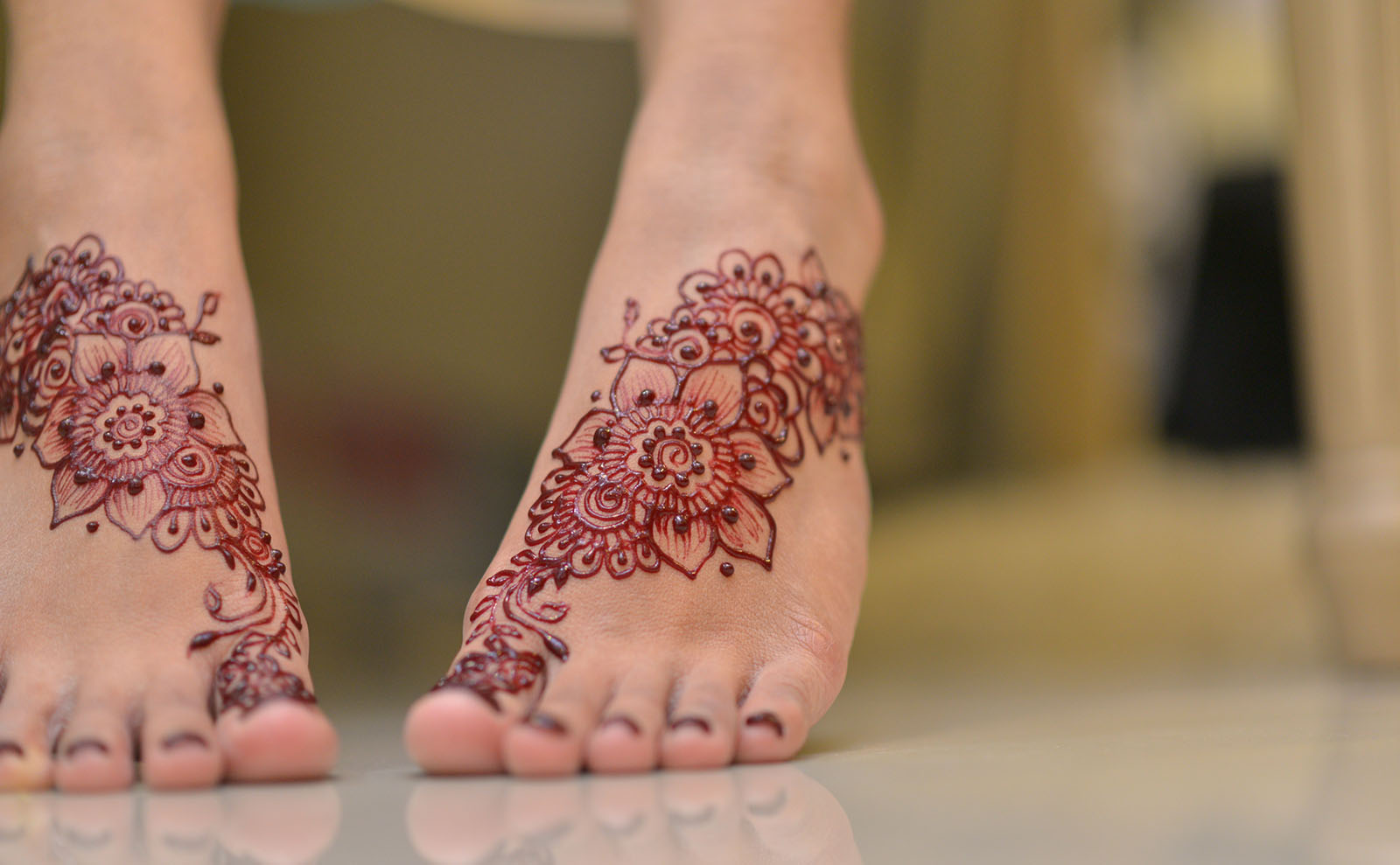
The art of adorning the hands and feet has been practiced throughout the Arabian Peninsula, the Middle East, India, and north Africa for thousands of years — usually to celebrate significant life events, including marriage.
In Morocco, a wedding celebration can last up to five days, and some of that time is devoted to henna art. Before the wedding ceremony, the bride-to-be gathers with female friends and relatives to eat and talk about married life. The older women pass along their wisdom to help prepare the bride for her wedding night while her hands and feet are decorated with henna. Guests at the wedding also wear henna, but their designs are usually less elaborate than the ones on the bride.
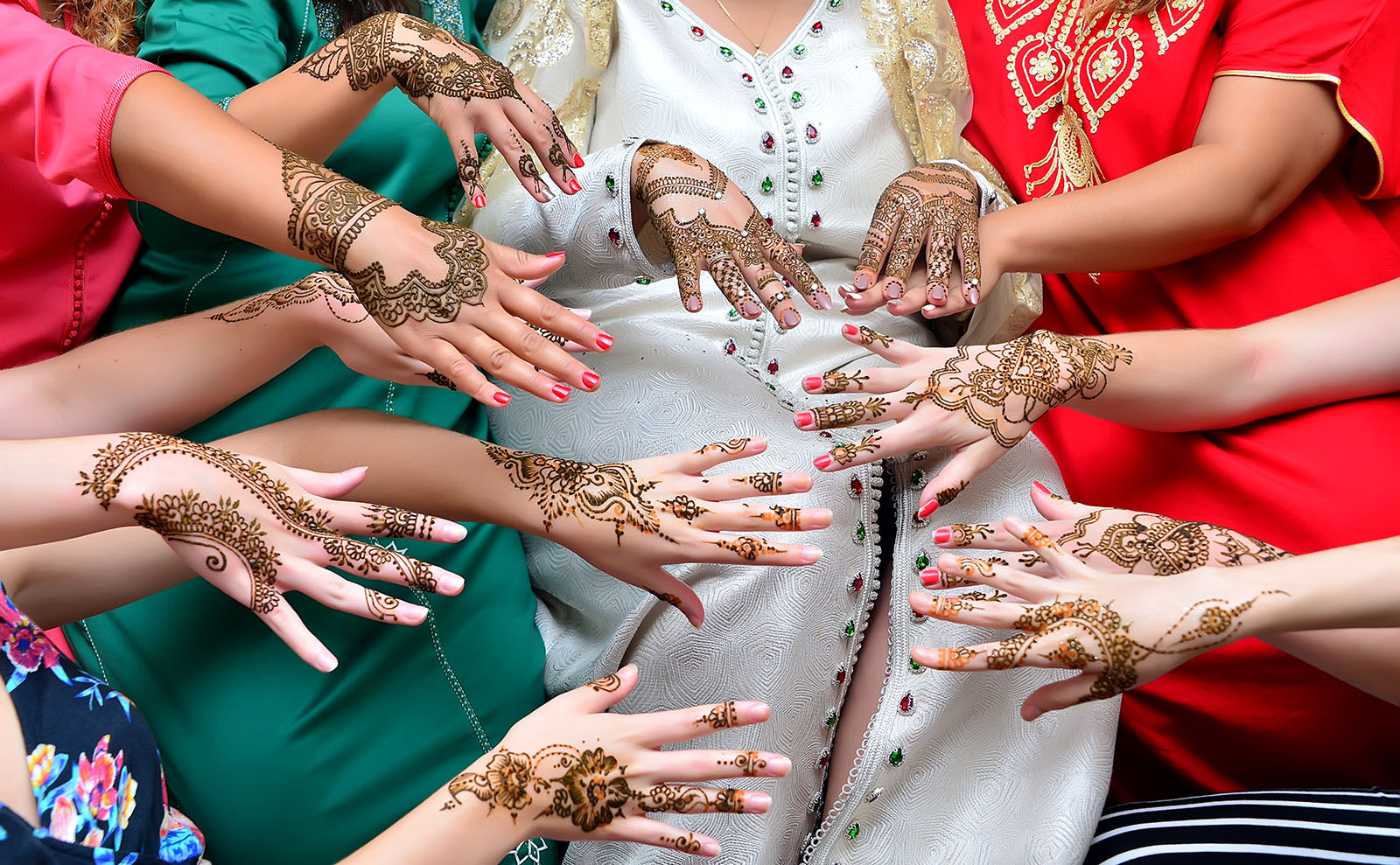
In Morocco
Although you can find henna artists in the Jemaa el Fnaa, the large square in Marrakech, it’s also known for scam artists. Instead, visit The Henna Café in Marrakech. It’s a registered cultural foundation, and it’s a well-reviewed place to learn more about henna art and have work done (and eat traditional Moroccan food). All of the income from the cultural experiences at the café is used for education and assistance to Moroccan people. Get all the details at the Henna Café website.
At Home
If a trip to Morocco isn’t on your schedule right now, you can play around with traditional designs at home. We recommend gathering your favorite people and making a celebration of it.
Top image courtesy of James Douglas.
Want to keep up with our book-related adventures? Sign up for our newsletter!
Can you help us? If you like this article, share it your friends!
Strong Sense of Place is a website and podcast dedicated to literary travel and books we love. Reading good books increases empathy. Empathy is good for all of us and the amazing world we inhabit.
Strong Sense of Place is a listener-supported podcast. If you like the work we do, you can help make it happen by joining our Patreon! That'll unlock bonus content for you, too — including Mel's secret book reviews and Dave's behind-the-scenes notes for the latest Two Truths and a Lie.
Join our Substack to get our FREE newsletter with podcast updates and behind-the-scenes info join in fun chats about books and travel.

We'll share enough detail to help you decide if a book is for you, but we'll never ruin plot twists or give away the ending.
Content on this site is ©2024 by Smudge Publishing, unless otherwise noted. Peace be with you, person who reads the small type.